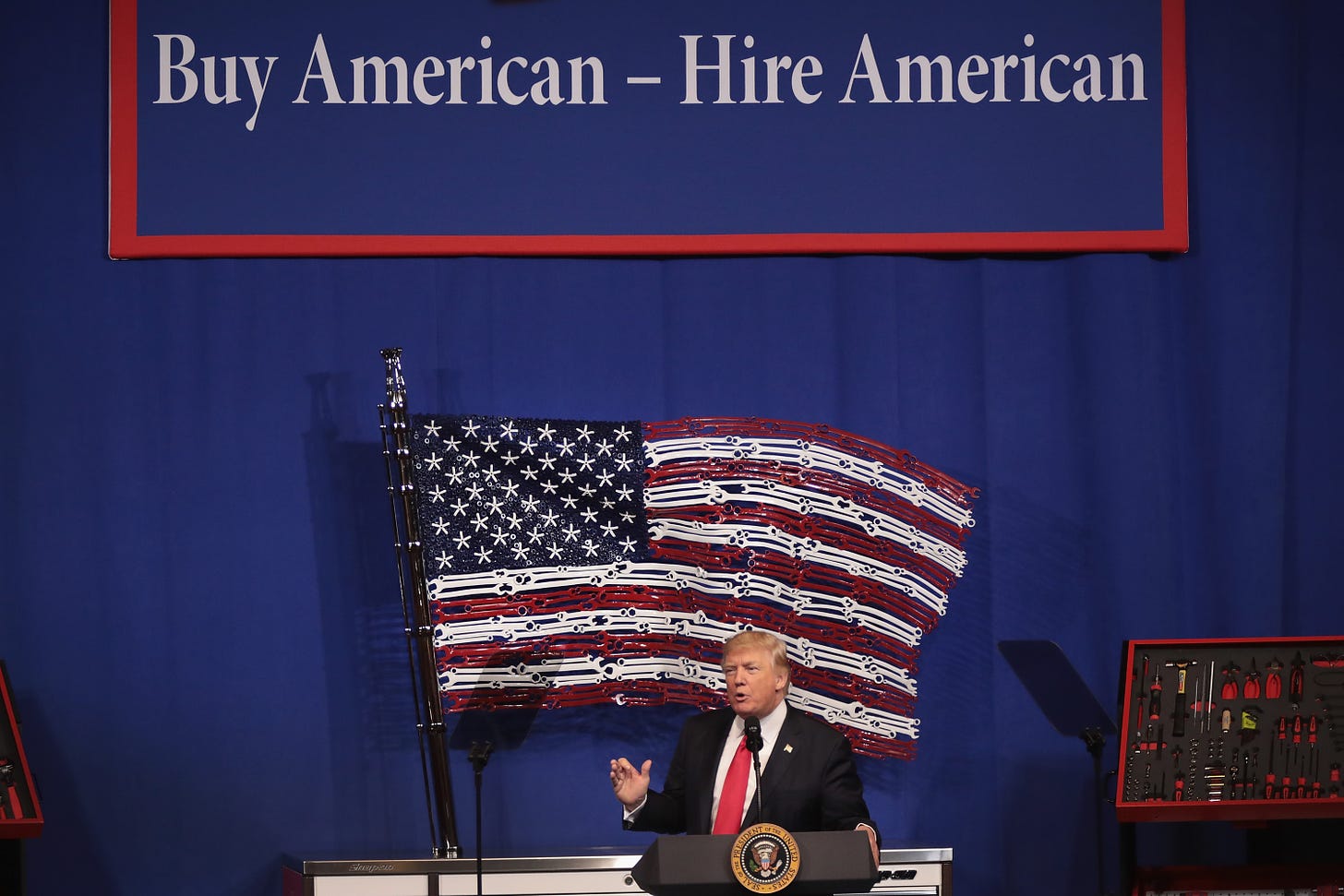National Security? Or Just Cold, Cruel Nativism?
A little-noticed administration move to end a foreign-worker program can’t be justified on the grounds that those workers hurt Americans.
Donald Trump’s immigration policies have prompted cries of xenophobia, prejudice and worse. He and his defenders have responded that those policies are needed for national security, to reduce crime, and to benefit American workers.
But even Trump’s most devoted supporters should have trouble justifying the administration’s latest move against foreigners: a formal call to repeal the H-4 Employment Authorizing Document (EAD) program. The move has received little media attention and seems largely bureaucratic, but it reveals the extent to which Trump and his administration will go to harm foreigners for no good reason.
The EAD program is for H-4 visa holders, who are the spouses and children of H1-B visa-holders. H-1Bs have advanced education, work skills and/or abilities, and an offer for a U.S.-based job employing those talents. By law, both H-1Bs and H-4s are vetted, legal entrants into the United States. The EADs grant H-4s permission to work in the United States while living here.
The Trump administration wants to end the EAD program, claiming it takes away jobs from Americans and lowers their pay. But economic research shows the opposite: employed H-4s create jobs and increase wages for Americans.
In the spring issue of my policy journal, Regulation, economists Ike Brannon of the Jack Kemp Foundation and M. Kevin McGee of the University of Wisconsin, Oshkosh, report the results of an extensive economic survey they conducted on H-4s.
They find that adult H-4s are a lot like their spouses: highly skilled and well-educated. In the survey sample, over 99 percent had a college degree and nearly 60 percent had an advanced degree. More than four-in-five of the respondents had obtained an EAD and three-quarters of those were employed in the United States. Of that group, 66 percent worked in a science, technology, engineering or mathematical (STEM) field, another 16 percent in business, finance, or management, and another 8 percent were health care professionals or health care support workers.
These are not the fields that have a surplus of American workers waiting to get jobs. On the contrary, the unemployment rate of qualified workers in these industries is below 2 percent. That is often deemed the frictional unemployment level: the point at which joblessness is from workers transitioning from old jobs to new ones. Many of the other EAD-holders worked in fields with only slightly larger labor supplies. Brannon and McGee estimate that, if the Trump administration ends EAD, just 5,500 to 8,200 Americans would get jobs as a result.
Consider that number in light of another of Brannon and McGee’s findings. Roughly 2 percent of EAD workers operate their own businesses and employ an average of five workers. If the Trump administration repeals EAD and those employers liquidate their firms, some 6,800 domestic employees would lose their jobs. In other words, the worker layoffs from terminated H-4-run businesses would roughly offset the employment gains from ending EAD.
Terminated H-4 businesses wouldn’t be the only detrimental effect on American workers from repealing EAD. Brannon and McGee briefly summarize economic research showing that high-skilled foreign workers like H-4s and H-1Bs create employment for native workers because the foreign workers boost domestic economic growth. That, in turn, raises the value of labor provided by native co-workers, vendors, and clients. That means these foreign workers increase jobs and wages for native workers, both high- and low-skilled.
Simply put, EAD workers are vetted, legal residents who are already in the United States, so there is no national security or rule-of-law justification for ending the program. These workers provide jobs and raise wages for American workers, so there is no native-labor justification for ending the program. Rather, this initiative would reduce Americans’ employment and wages for no good reason. That hardly puts America first.
Interestingly, this Trump proposal creates a problem for another administration initiative: the appointment of Neomi Rao to the D.C. Circuit Court of Appeals. Rao currently heads the Office of Information and Regulatory Affairs (OIRA), a little-known but very important agency inside the Executive Office of the President. OIRA’s job is to review high-cost administration initiatives to verify that the resulting benefits justify the costs. Brannon and McGee conservatively estimate that ending H-4 EAD will impose a $7.5 billion cost on the U.S. economy, subjecting it to OIRA review. Since the “benefit” from that cost is lower American employment and wages, ending EAD is precisely the sort of initiative that Rao’s OIRA should slap down.
If that happens—if OIRA does its job—the administration will have to explain why it is willing to reduce Americans’ incomes in order to penalize foreigners.



